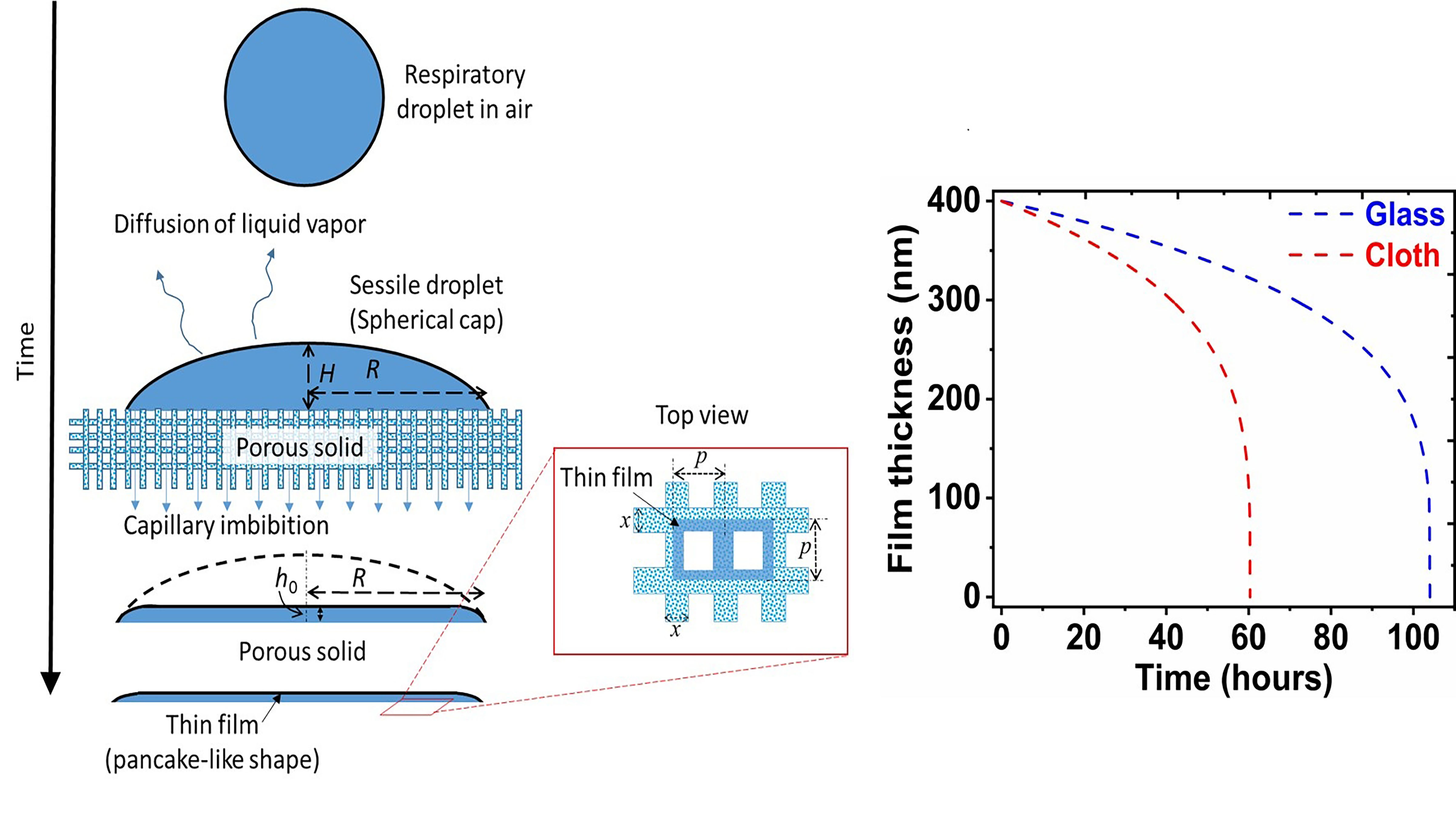As we approach two full years of the COVID-19 pandemic, we now know it spreads primarily through airborne transmission. The virus rides inside tiny microscopic droplets or aerosol ejected from our mouths when we speak, shout, sing, cough, or sneeze. It then floats within the air, where it can be inhaled by and transmitted. This inspired researchers in India to explore how we can better understand and engineer airflow to mitigate the transmission of COVID-19.
Tag: Indian Institute of Technology Bombay

Porous Materials Unfavorable for Coronavirus Survival
As COVID-19 spreads via respiratory droplets, researchers have become increasingly interested in the drying of droplets on impermeable and porous surfaces; surfaces that accelerate evaporation can decelerate the spread of the virus. In Physics of Fluids, researchers show a droplet remains liquid for a much shorter time on a porous surface, making it less favorable to survival of the virus. On paper and cloth, the virus survived for only three hours and two days, respectively.
Nikhil Tiwale: Practicing the Art of Nanofabrication
Applying his passions for science and art, Nikhil Tiwale—a postdoc at Brookhaven Lab’s Center for Functional Nanomaterials—is fabricating new microelectronics components.

COVID-19 Cough Clouds in Closed Spaces
As the pandemic continues, researchers have increasingly focused on the extent to which respiratory droplets carrying the coronavirus travel and contaminate the air after an infected person coughs. While scientists have studied the properties of air at the mouth, less is known about how these properties change as the cough cloud travels. In Physics of Fluids, researchers estimate the evolving volume of the cough cloud and quantify the reduction in its volume in the presence of a face mask.